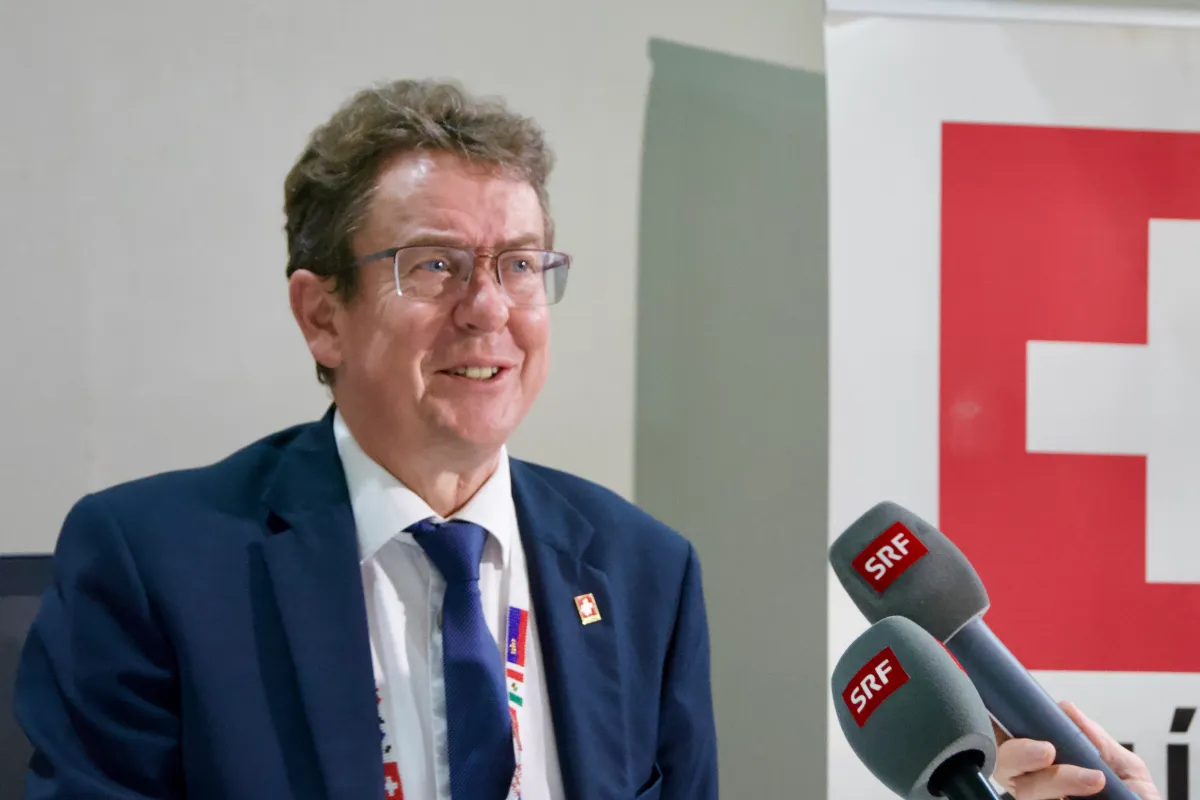
COP30: Switzerland Reinvigorates Its Climate Offsetting Plan
Paula Dupraz-Dobias is an award-winning Geneva-based journalist covering environment, business, international organizations, humanitarian crises and Latin America.
-
More from this aut
On Friday, Switzerland's environment ministry disclosed the launch of the Article 6 Ambition Alliance, a group of 10 nations working together under the Paris agreement clause on helping developed countries narrow the gap that exists between their domestic carbon-cutting plans and international goals to keep global warming within the limits set by the Paris climate agreement a decade ago.
Joining Switzerland in the alliance are Germany, Luxembourg, Norway and Sweden, who intend to finance projects aimed at compensating their emissions abroad, as well as host countries Peru, Chile, Mongolia, Ghana and Zambia who commit to greenlight those projects domestically.
Article 6.2 of the Paris agreement allows developed nations to transfer emissions reductions with other countries through bilateral agreements. Carbon credits, known under the scheme as ITMOs (Internationally Transferred Mitigation Outcomes) are then transferred. Switzerland plans to offset a third of its emissions through the purchase of emissions reduction certificates in other countries under Article 6.2.
But the scheme has been criticised for allowing countries to use the credits instead of taking more action domestically to curb emissions. Other issues including developed partners using“low-hanging fruit”, or projects that may otherwise be implemented by developing countries to reduce their own carbon emissions, as well as human rights issues, including a lack of informed consent with communities ahead of their execution, have also come under fire.
A statement from the alliance supported a recent report by the Intergovernmental Panel on Climate Change stating that globally, countries' climate targets are insufficient to achieve the temperature goal of the Paris agreement, limiting average warming to +1.5° Celsius, with more climate mitigation and assistance to developing countries needed.
An event announcing the alliance in the presence of ministers from partner countries scheduled for Thursday had to be cancelled due to COP30 negotiations on a final political text, which the Brazilian president has called the Global Mutirão, or a term in the Tupi-Guarani language meaning“collective effort”. A fire at the COP30 venue further complicated plans for a joint launch.
Two more projects and countingSwitzerland was a key proponent of the bilateral offset mechanism ahead of the Paris Agreement in 2015. A rulebook, or framework that set guidance including how transfers between countries can be accounted for and a number of social safeguards, was then established at the COP26 in 2021.
In Belém, Switzerland added to its Article 6.2 repertory, signing three new agreements with Mongolia, Zambia and Uganda bringing the total of agreements it has signed with countries to 17.
Swiss environment and energy minister Albert Rösti, who arrived in Belém on Thursday for the final stretch of negotiations in the Amazonian port town, told Swissinfo that Article 6 was important for Switzerland. He said another 20 more were currently in discussion.
Earlier projects for Switzerland have included financing projects such as more sustainable cookstoves in Peru, its first project, and an electric bus project in Thailand.
Other developed countries including Singapore, Japan and the United Kingdom have also actively collaborated with developing countries on Article 6.2 projects.
Where are the credits?But as Switzerland widens its portfolio of Article 6 projects, experts expressed concerns about what would happen after 2030, five years ahead of Switzerland's latest climate policy targets set for 2035. For Axel Michaelowa, head of international climate policy at the University of Zurich, the Swiss federal council needs to prolong the acquisition of credits to 2035.“These projects do not fall from the sky,” he said.“They need to have a long-term perspective and a perspective until 2030 is insufficient.”
Climate deals under Article 6.2 are structured to meet Switzerland's 2030 emissions reduction target, ahead of the more recent climate plan submitted earlier this year to the UN climate body, set for the period up to 2035.
Meanwhile, a technical expert reportExternal link published in August by the secretariat of the UNFCCC, the United Nations Framework Convention on Climate Change, pointed to negligible impact on Switzerland's emissions reductions through its ITMOs.
When asked about the report, Rösti said in Belém instead that Switzerland has seen“clear progress” working toward its climate goals due to the adoption by following a referendum two years ago of the climate and innovation act, aimed at achieving net zero emissions by 2050.
Last year in Baku, Azerbaijan, where the last COP was held, a rulebook for voluntary carbon market credits was adopted to better regulate how private and public actors could earn credits for emissions reductions. Michaelowa noted that deals now being agreed under that regime, known as Article 6.4 rules, will be more reliable in terms of social and environmental safeguards, and with a UN supervisory body set up to help implement the scheme which would provide stronger oversight and transparency.
More More Emissions reduction Emission reductions: the countries doing the 'dirty work' for SwitzerlandThis content was published on Nov 12, 2025 Switzerland has pioneered international carbon offsetting under the terms of the Paris Agreement. But the practice has generated fresh concerns and criticism.
Read more: Emission reductions: the countries doing the 'dirty work' for Switze
Legal Disclaimer:
MENAFN provides the
information “as is” without warranty of any kind. We do not accept
any responsibility or liability for the accuracy, content, images,
videos, licenses, completeness, legality, or reliability of the information
contained in this article. If you have any complaints or copyright
issues related to this article, kindly contact the provider above.

















Comments
No comment